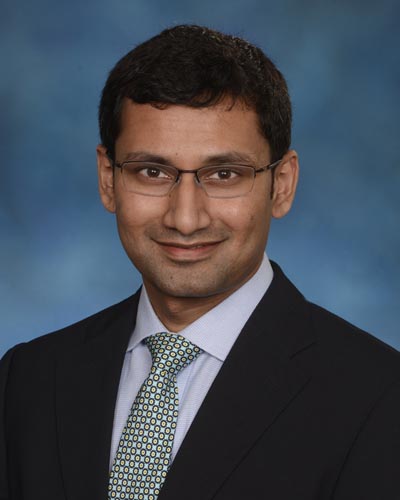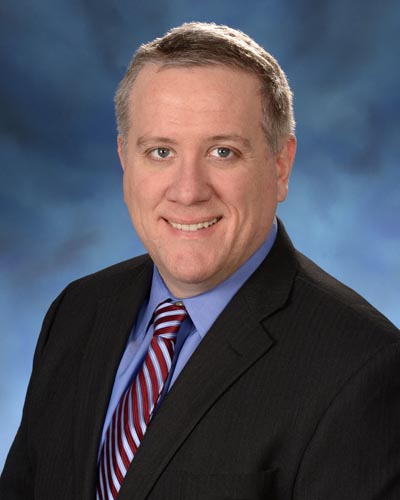September 18, 2019 | Deborah Kotz

University of Maryland School of Medicine Study finds treatment solely based on sleep studies unreliable in children with sleep apnea
Pediatricians routinely advise parents of children who snore regularly and have sleepiness, fatigue or other symptoms consistent with sleep disordered breathing, to get a sleep study; this can help determine whether their child has obstructive sleep apnea, which is often treated with surgery to remove the tonsils and adenoids (adenotonsillectomy). Often pediatricians make surgery recommendations based on the results of this sleep study.
But a new finding from the University of Maryland School of Medicine (UMSOM) suggests that the pediatric sleep study -- used to both diagnose pediatric sleep apnea and to measure improvement after surgery - may be an unreliable predictor of who will benefit from having an adenotonsillectomy.
About 500,000 children under age 15 have adenotonsillectomies every year in the U.S. to treat sleep apnea. The American Academy of Pediatrics (AAP) recommends the surgery as a first-line therapy to treat obstructive sleep apnea, which can cause behavioral issues, cardiovascular problems, poor growth, and developmental delays. The premise is that surgically removing or reducing the severity of the obstruction to the upper airway will improve sleep and reduce other problems caused by the disorder.
In 2012, the AAP recommended that pediatricians should screen children who snore regularly for sleep apnea, and refer children suspected of having the condition for an overnight in-laboratory sleep study. The group also recommended an adenotonsillectomy based on the results of the test. But results from the new UMSOM study, published in the September issue of the journal Pediatrics, call into question those recommendations because the data they analyzed found no relationship between improvements in sleep studies following surgery and resolution of most sleep apnea symptoms.
“Resolution of an airway obstruction measured by a sleep study performed after an adenotonsillectomy has long been thought to correlate with improvement in sleep apnea symptoms, but we found this may not be the case,” said study lead author Amal Isaiah, MD, PhD, an Assistant Professor of Otorhinolaryngology--Head and Neck Surgery and Pediatrics at UMSOM. “Our finding suggests that using sleep studies alone to manage sleep apnea in children may be a less than satisfactory way of determining whether surgery is warranted.”
Video:
Dr. Isaiah discusses the sleep study and explains its findings.
To conduct the study, Dr. Isaiah and his colleagues, Kevin Pereira, MD, from UMSOM and Gautam Das, PhD, at the University of Texas at Arlington conducted a new analysis of findings from 398 children, ages 5 to 9 years, who participated in the Childhood Adenotonsillectomy Trial (CHAT), a randomized trial published in 2013 that compared adenotonsillectomy with watchful waiting to treat sleep apnea. They found that resolution of sleep apnea, as determined by sleep study results, did not correlate with improvements in the majority of outcome measures including behavior, cognitive performance, sleepiness and symptoms of attention deficit hyperactivity disorder.
“This is an important finding that should be carefully considered by the pediatric medical community to determine whether recommendations concerning the management of sleep apnea need to be updated,” said E. Albert Reece, MD, PhD, MBA, Executive Vice President for Medical Affairs, UM Baltimore, and the John Z. and Akiko K. Bowers Distinguished Professor and Dean, University of Maryland School of Medicine. “Practice guidelines, in every field of medicine, should reflect the current state of science.”
In the CHAT Trial, the researchers found that 79 percent of children who had the surgery had a normal sleep study 7 months later compared to 46 percent of those who had watchful waiting. Sleep apnea resolved spontaneously in about half of the children who underwent watchful waiting. It also demonstrated no significant improvement in how children performed on cognitive tests to assess how well they could focus, analyze and solve problems, and recall what they had just learned.
The CHAT researchers did find, however, that those who had early adenotonsillectomy had improved symptoms, quality of life, and behavior.
About the University of Maryland School of Medicine
Now in its third century, the University of Maryland School of Medicine was chartered in 1807 as the first public medical school in the United States. It continues today as one of the fastest growing, top-tier biomedical research enterprises in the world -- with 43 academic departments, centers, institutes, and programs; and a faculty of more than 3,000 physicians, scientists, and allied health professionals, including members of the National Academy of Medicine and the National Academy of Sciences, and a distinguished recipient of the Albert E. Lasker Award in Medical Research. With an operating budget of more than $1 billion, the School of Medicine works closely in partnership with the University of Maryland Medical Center and Medical System to provide research-intensive, academic and clinically based care for more than 1.2 million patients each year. The School has over 2,500 students, residents, and fellows, and more than $530 million in extramural funding, with most of its academic departments highly ranked among all medical schools in the nation in research funding. As one of the seven professional schools that make up the University of Maryland, Baltimore campus, the School of Medicine has a total workforce of nearly 7,000 individuals. The combined School and Medical System (“University of Maryland Medicine”) has an annual budget of nearly $6 billion and an economic impact more than $15 billion on the state and local community. The School of Medicine faculty, which ranks as the 8th highest among public medical schools in research productivity, is an innovator in translational medicine, with 600 active patents and 24 start-up companies. The School works locally, nationally, and globally, with research and treatment facilities in 36 countries around the world. Visit medschool.umaryland.edu
Contact
Department of Anesthesiology
(410) 328-6120 (phone)
(410) 328-5531 (fax)
newsletter@som.umaryland.edu
Deborah Kotz
Director of Media Relations
Office of Public Affairs & Communications
University of Maryland School of Medicine
o: 410-706-4255
c: 410-804-0054
t: @debkotz2
Related stories

Thursday, November 21, 2024
UM School of Medicine Researchers Link Snoring to Behavioral Problems in Adolescents without Declines in Cognition
Adolescents who snore frequently were more likely to exhibit behavior problems such as inattention, rule-breaking, and aggression, but they do not have any decline in their cognitive abilities, according to a new study conducted by researchers at the University of Maryland School of Medicine (UMSOM). This is the largest study to date tracking snoring in children from elementary school through their mid-teen years and it provides an important update to parents struggling with what medical measures to take to help manage snoring in their children.

Tuesday, April 13, 2021
UM School of Medicine Researchers Find Habitual Snoring Linked to Significant Brain Changes in Children
Children who regularly snore have structural changes in their brain that may account for the behavioral problems associated with the condition, including lack of focus, hyperactivity, and learning difficulties at school. That is the finding of a new study conducted by researchers at the University of Maryland School of Medicine (UMSOM), which was published today in the journal Nature Communications.

Thursday, January 16, 2020
University of Maryland School of Medicine Research Shows That Older Patients With Untreated Sleep Apnea Need Greater Medical Care
Obstructive sleep apnea (OSA) is a common and costly medical condition leading to a wide range of health risks such as cardiovascular disease, stroke, depression, diabetes and even premature death. Researchers at the University of Maryland School of Medicine (UMSOM) found that the medical costs are substantially higher among older adults who go untreated for the disorder.

Thursday, December 07, 2017
University of Maryland School of Medicine Scientists Identify the First Brain Cells to Respond to Sound
Some expectant parents play classical music for their unborn babies, hoping to boost their children’s cognitive capacity. While some research supports a link between prenatal sound exposure and improved brain function, scientists had not identified any structures responsible for this link in the developing brain.
